Vietnam is a country full of photographic opportunities. The landscape is diverse and includes a very long and beautiful coastline, karstic rock formations, and mountains. Because Vietnam is just doing its first steps in the modern world (unlike Thailand or China which are much more developed) there are still plenty of opportunities to observe traditional lifestyles and traditions. People have an amazing ethnic diversity and most like to be photographed. There is also interesting architecture all around the country, although it is not as spectacular as in other countries of South-East Asia such as Cambodia or Myanmar.
Now is a good time to visit Vietnam. Vietnam opened itself to tourism in the late 80s. At the beginning there were still a lot of red tape and travel restrictions, and the tourist infrastructure was quite poor. In the late 90s I found it easy to travel in Vietnam. The country is industrializing extremely quickly to meet the needs of its dense population. Things are changing very fast, in a few years, the traditional way of life might be gone, and uncontrolled development might have spoiled some of the finest scenery.
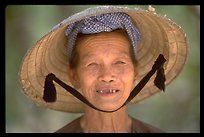
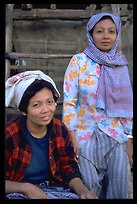
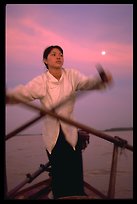
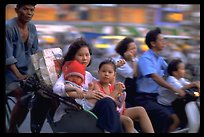
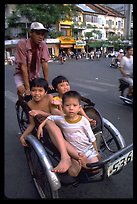
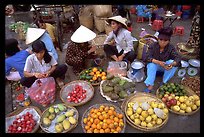
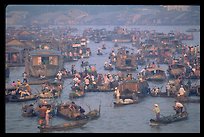
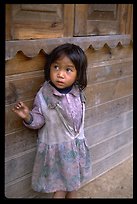
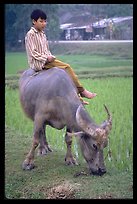
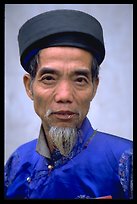
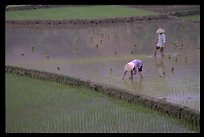
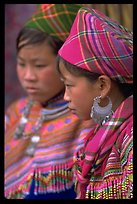
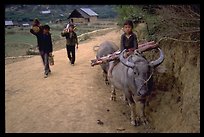
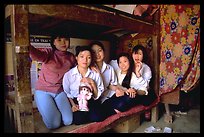
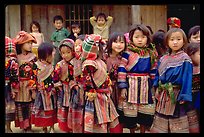
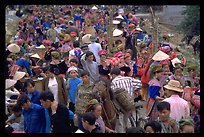
My primary subject in Vietnam has always been the people. You will find that they are very approachable and most of the time don't mind being photographed. The kids just love it and will often ask you to take a picture of them, even when they know that their chance of seeing it is almost nil. In general, the less developed (westernized) a place is, the more approachable and curious the people will be. If you travel with someone who speaks Vietnamese, he can often convince strangers to pose for you, or often you will be able to ask/direct people by sign language. A smile, gesture pointing to the camera, will often be all it takes. In Vietnam (or anywhere else for that matter) don't treat people like wildlife. Establish a relationship with them, if only for a few minutes. Learn a few words of the language. In general, the people who object to being photographed would be young women, out of shyness more than anything else.
In any town, the market would be a good place to start for street photography. In particular the Cholon (the Ho Chi Minh City's Chinatown) markets are particularly lively, and there are wholesale markets there which are very interesting to see. In general, The smaller the town, the more authentic the atmosphere will be. The rural lifestyle hasn't changed much in centuries. One of the most interesting sights in the Delta are the floating markets and associated river life. Near Can Tho, there are three different floating markets. Although they are well-known, the level of "commercialization" is still considerably less than the floating markets of Thailand. Often you won't see other travellers on the water at all. In general, the North will be more authentic, but also more reserved, less open and welcoming at first.
You will find in the far North-West mountains the highest concentration of well-preserved hill-tribe (also called "minoriy" or "montagnard" culture), but now, you have to go at least beyond Mai Chau (preferably Son La) in the West or to Bac Ha and Sapa in the North. Things are also changing fast there, and some aspects of montagnard culture (like wearing elaborate traditional dresses to go into the fields) are disappearing quickly. For instance my guidebook said that after Mai Chau, every woman was practically still wearing the traditional dress, but I found them to be in minority. The North-East mountains has as many montagnard people as the North-West, but they appear more "vietnamised" and you will rarely see them wearing their traditional costumes. The Sapa market now is visited by almost as many tourists as local people. The Hmong are still very present there, but the women now try to make a living of tourism. However, the area around it is still one of the richest. The markets around Bac Ha are the most colorful of all I have seen so far, and are still quite authentic, but things are changing fast. The Tam Duong market is also supposed to be very interesting. Be sure to check the schedules, as the most interesting markets are weekly events not held every day. Most of the hill-tribe people don't mind the camera, however, there are some ethnic groups which are camera-shy, such as the Dzao. Don't harass them.
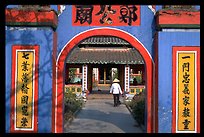
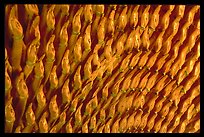
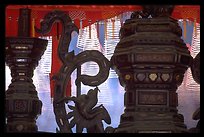
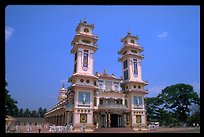
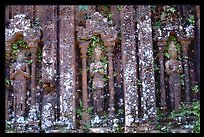
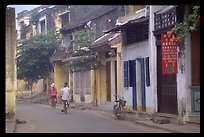
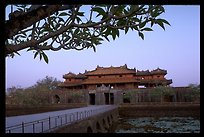
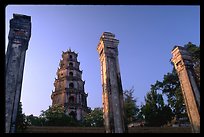
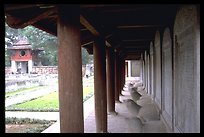
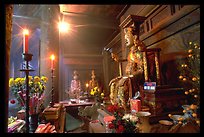
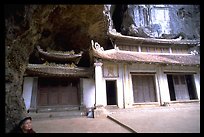
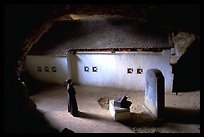
The South, being settled more recently (Saigon has only 300 years) has less interesting architecture than other parts of the country. However, the extravagantly baroque Great Cao Dai temple in Tay Ninh and the Chinese temples in Cholon, full of incence coils and red colors, are not to be missed. The ceremony at the Great Cao Dai temple takes place at noon (there are three others during the day, but it's too dark then). Past the first half-hour, the crowds of tourists in the observation balcony will thin out, so there is no need to jockey for position.
In the center, the city of Hoi An has the best set of preserved ancient homes in the country. In that area, there are some interesting Cham archeological sites. They are mostly ruined, with tropical vegetation begining to reclaim its territory, while the original art can mostly be seen at the museum in Danang. The Danang's marble mountains have some of the finest troglodyte sanctuaries I have ever seen. The imperial citadel of Hue used to rival Beijing's forbidden city, but most of it was destroyed during the Tet offensive in 1968. However the imperial mausoleums spread along the Perfume river are very well preserved.
Besides communist monuments (and one of the only remaining Lenin statues), Hanoi and its surrounding have numerous ancient temples, especially near Ninh Binh, where you'll also find an interesting church built in local style. Hanoi itself has the nostalgia of a fading postcard of colonial French architecture. The stained and aging painted walls have a lot of character.
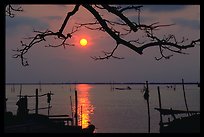
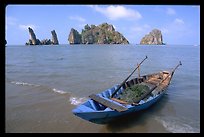
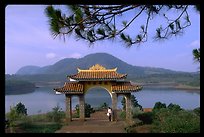
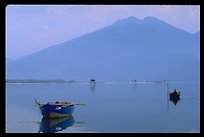
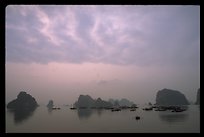
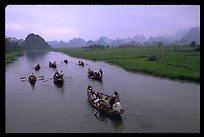
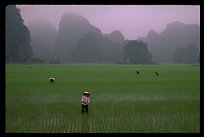
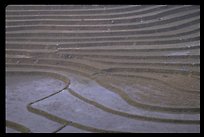
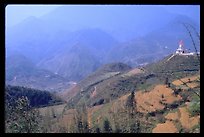
The delta being quite flat, most of the interesting landscapes there will be on the coast, especially near the Cambodia border where it gets more mountainous. The central portion of the cost is beautiful, with the mountains dropping into the South China Sea. The road between Da Nang and Hue is particularly scenic.
There are remarkable karstic formations in the North, comparable to some the better known sites of South China. The site of Halong Bay is deservedly famous, but it can be challenging to get a good picture there. You are pretty far from the rocks, and on a boat, the perspective is not right. There, I favor the less touristic Hon Gai side, where mining activity and fishing boats make an interesting foreground. The site of Tam Coc has similarly shaped rocks, but instead of being in the sea, they are among cultivated rice fields.
The most beautiful and wild mountain scenery are in the far north regions near the China border, in particular between Sapa and Tam Duong.
The best solution is to rent a car and driver. The driver comes for free as you're mostly paying for the vehicle and mileage, at rates which locally look exorbitant but are actually comparable to those found in the West, typically between $25 to $50 per day. Besides the type of car, the rate will depend on the actually mileage driven, as well as the duration of the trip, and everything has to be negociated in advance. The driver sometimes can serve as your guide, helping with lodging and meal arrangements, as well as facilitating your communication with the locals. It is a good idea to try to go on a shorter trip with him before committing to hire him for the whole length of your trip. Many drivers do not speak English, in which case you will also need a guide/interpret. As a foreigner, you were not permitted to drive a vehicle in Vietnam until 2002, and you will soon realize that there was a good reason for that. I don't advise you try. Local drivers seem to enjoy speeding on one-lane roads which are clogged with pedestrians, animals, bicycles, and motorcycles (which drive at night without lights). The main traffic rule is that the right of way belongs to the biggest, or most resolute vehicle. With your own vehicle, you can go where you want, when you want, and more importantly stop on the road if you see something interesting.
There are also a number of places where you'll be traveling on water (the Delta, Nha Trang, Halong, the Perfume river...). Consider renting your own boat for the same reasons as above. It's not so expensive.
When you are staying in a large city, a car is not necessary. Instead, what I like to do is to ride on the back of a moto-taxi. This is fairly inexpensive, and fast, and makes it easy to stop when you want. Cyclos are a good option too if you have time, since you can photograph from them. Ask your hotel/guesthouse manager to recommend you someone to take you for a ride, rather than picking someone at random. You'll get more dependable and safe service this way.
Typically (except for a few months) day time temperature is about 90 F with high humidity. It will be pretty tiring to walk around, so it would help not to carry a ton of gear.
I can make only recommendations for slide film, as I use only occasionally other types. For general purpose use, I like Fuji Astia/Sensia II. The usable dynamic range is better than most slide films due to the lower contrast, and the skin tones are very natural. Velvia is great for scenics in good light, or under overcast conditions (where a tripod might be necessary). If you find that under overcast skies, Astia tends to be a bit dull, you can try Kodak E 100 VS, which gives you color characteristics quite close to Velvia, but with an extra stop. Think also about packing some film for use at 200 or even 400 ASA.
Of course I was not found of having my film processed locally (see below). However, at the airport there was absolutely no problem, and the agent accepted readily not to x-ray the film (even though I didn't have $5 bills inserted into my passport). I departed the country twice from Saigon, once from Hanoi, and once at the China border without difficulty. Things have been much more easy on tourists recently, and the official regulation is not enforced at the airport. I don't think you should worry if you carry the film with you. Just do not leave the film in your luggage). Someone has reported that unprocessed rolls were removed by airport personnel. In conclusion, you should not try to send out your unprocessed film, but rather hand-carry it with you.
The x-ray machines at the Saigon and Hanoi airport look modern (and therefore not likely to damage film), but I would still insist on hand-inspection. I have not found it difficult to obtain. I suspect a "tip" would solve any problems. For me insistence was enough. There might be older machines hanging around in smaller airports.
In Ho Chi Minh city, there is a Fuji lab is on Le Than Ton street in central Saigon, close to the city hall. They stock most of Fuji films in all common formats (35mm, 120) and are able to process 120. The price is comparable to Europe (ie 75% above B&H prices). I've talked to the owner and he seems to know what he's doing, but I haven't used them for processing. In 1998, this was one of the only places to carry Fuji film. In 2001, two other Fuji labs were suggested by Hoang Nguyen (both have Frontier Fuji digital stations and handle/sell 120), at 82 Nguyen Hue and 114 bis Nam Ky Khoi Nghia. Kodak is much more common, although don't expect a large choice. Outside of Hanoi and Ho Chi Minh city, the only slide film I saw was Ektachrome Elite 100. Nguyen Hue avenue has many camera stores, which have almost everything you could look for, including fancy 35mm and MF stuff. The prices seemed to be 10% lower than B&H.
In Hanoi, Fuji films can be found at: "Ho Guom Prolab and Studio". Le Thai To street, near the Hoang Kiem lake and the old city. A few blocks on the same street, there is "Le Thanh", which although it is probably the best stocked camera store in Hanoi, doesn't have much stuff.
Home / Vietnam / Information / photography